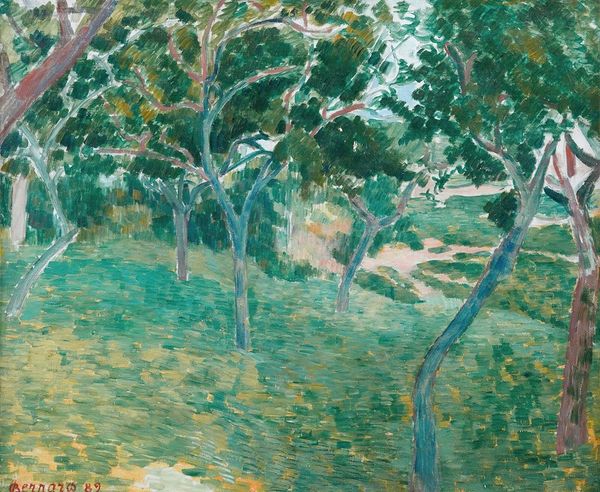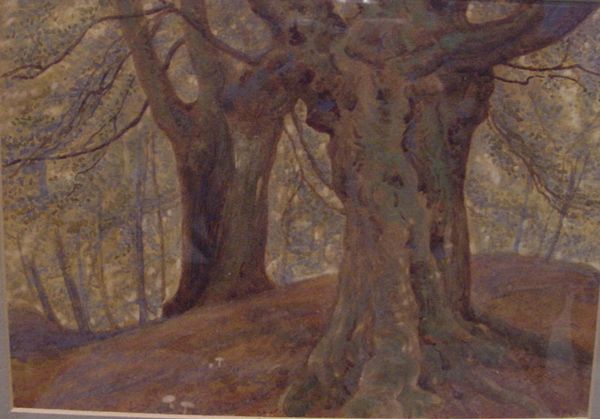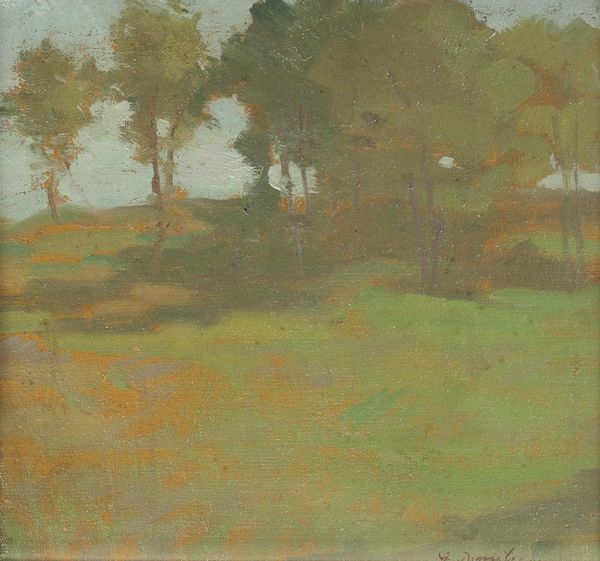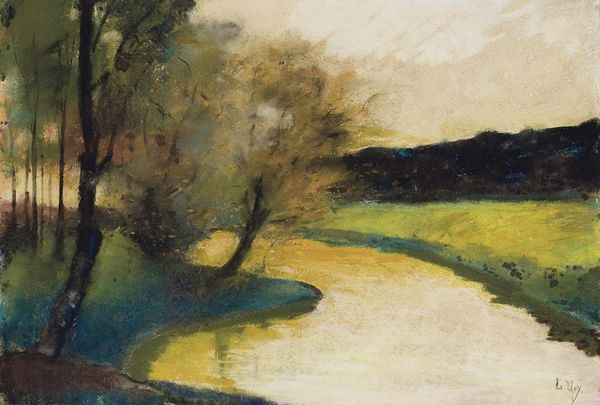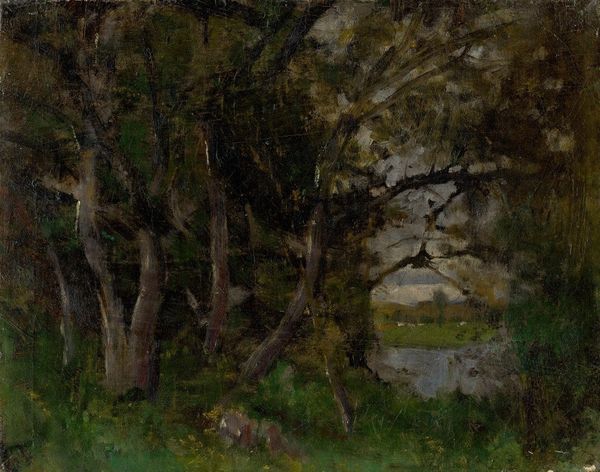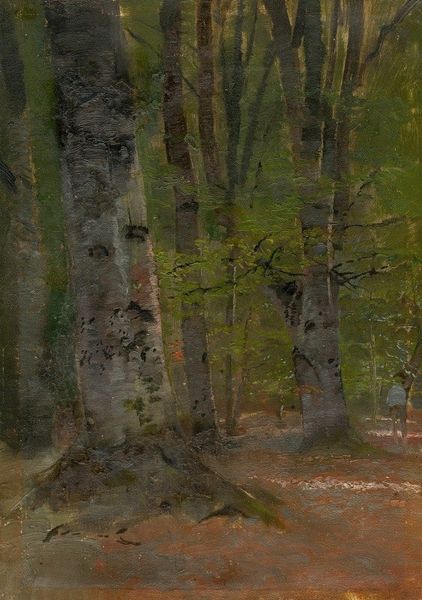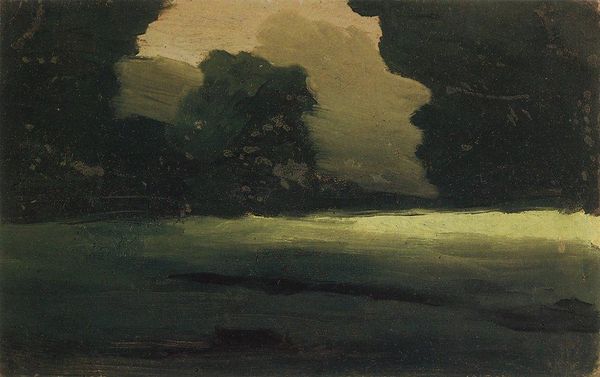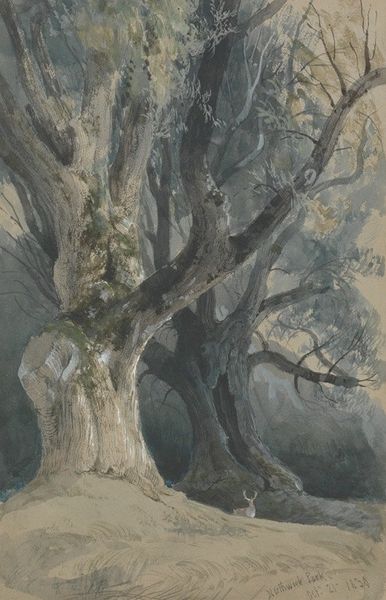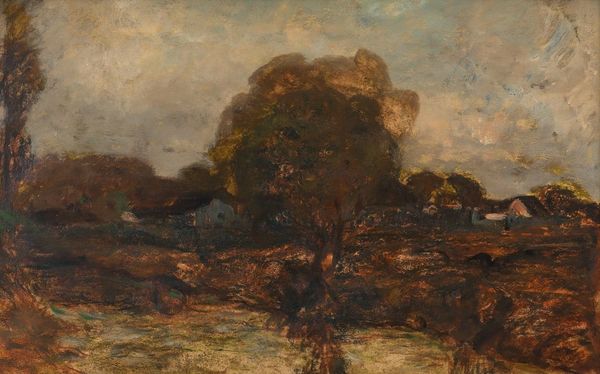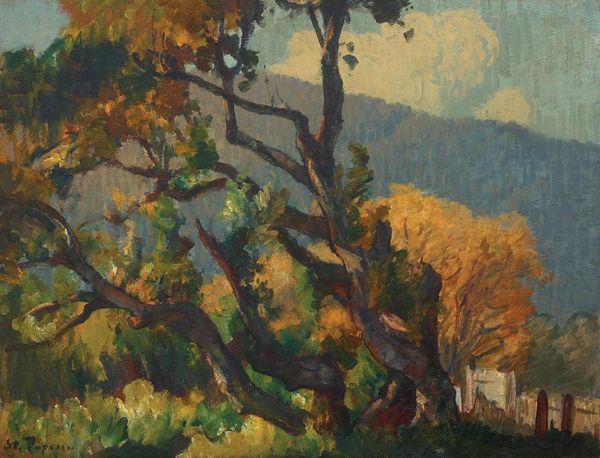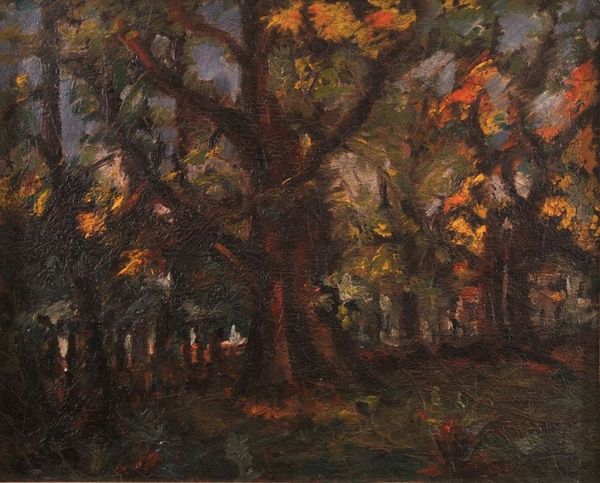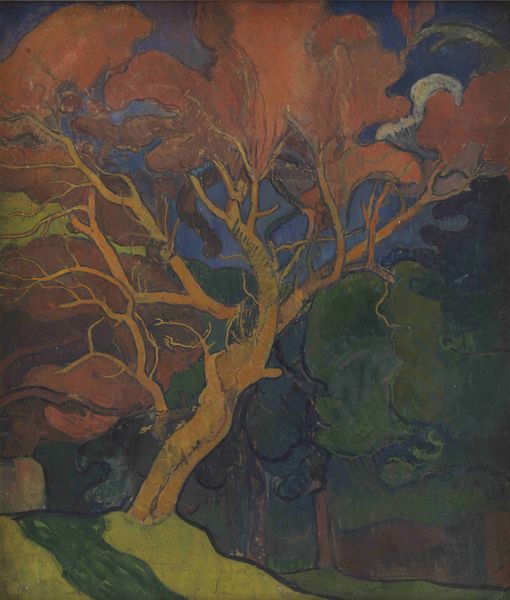
Copyright: Public domain
Editor: So, this is Stefan Popescu's "Blue Landscape," painted in 1913, using oil. I find the overall effect quite melancholic, almost like looking at a memory. What do you see in this piece? Curator: I see a landscape pregnant with socio-political implications, a quiet commentary on a world on the brink of war. The somber, almost monochromatic palette reflects a sense of impending doom pervasive in pre-World War I Europe. The 'blue' isn't simply descriptive; it speaks to a collective anxiety. Editor: That’s interesting. I was focusing more on the artistic style. Do you see a connection with the Impressionist movement here? Curator: The stylistic elements connect with late-stage Impressionism, but it’s being filtered through a Modernist lens—Popescu captures an emotional atmosphere, using visible brushstrokes to build more than just visual representation, reflecting a destabilizing sense of alienation and perhaps prescience regarding coming conflicts and social change. Look how the gnarled trees are almost anthropomorphic. What might they symbolize? Editor: Maybe resilience? Or the burdens of history? Curator: Precisely! Their contorted forms seem to bear the weight of past and future turmoil. Considering Popescu’s cultural context – Romania at the beginning of the 20th century, still struggling to establish its own artistic identity – can we see the painting as a reflection of that cultural and national anxiety? Editor: So, it's not just a pretty picture; it’s a statement about identity and the unease of a changing world. Curator: Exactly. Art constantly interacts with history and vice versa; understanding them as such provides us with greater insights into the artwork itself. Editor: I'll definitely look at landscapes differently now! Thanks for the insight!
Comments
No comments
Be the first to comment and join the conversation on the ultimate creative platform.
